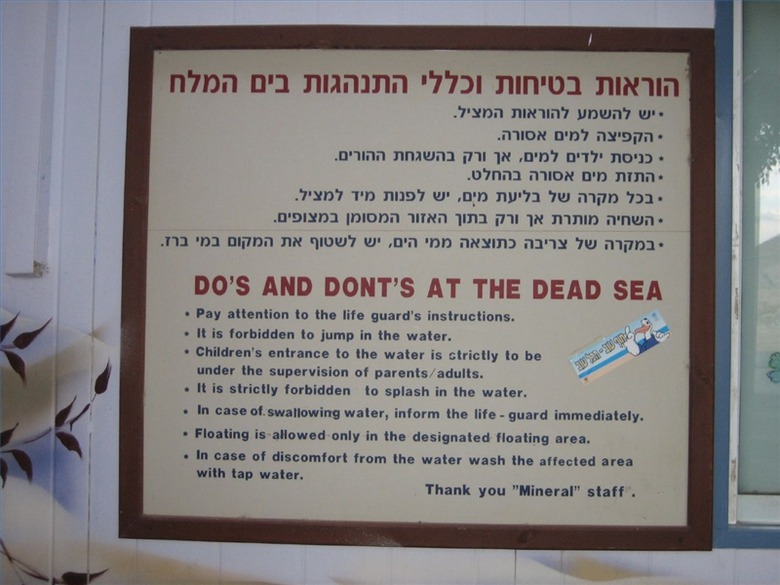Can Anything Live In The Dead Sea?
Normal marine life cannot live in the Dead Sea, which is six times saltier than the ocean down to about 130 feet and 10 times saltier than the ocean at 300 feet. The name of the Dead Sea in Hebrew, "Yam ha Maved," literally means, "Killer Sea," and instant death is exactly what happens to any fish that strays into its waters from the River Jordan or other fresh water streams that flow into the Dead Sea. Life does exist in the Dead Sea, though, in the form of two bacterium and one type of algae.
History
History
To the naked eye, the Dead Sea is devoid of life, but microbiologist Benjamin Elazari-Volcani found many microscopic life forms in Dead Sea water when he examined it in 1936. The tiny creatures thriving in the Dead Sea included living archaea, bacteria, algae, cyanobacteria and protozoans.
Types
Types
Elazari-Volcani found that some residents of the Dead Sea merely tolerated the salt, finding ways to absorb water despite the extreme saltiness. He called those "halotolerant" organisms. But most intriguing were the creatures he called "salt-loving" or "halophilic" organisms. These creatures have adapted to use the salt in their metabolisms to the point where they have become so dependent upon high saline water that they cannot live where there is less salt in the water. What kills every other sort of marine life is essential to their survival.
Function
Function
Further research by a team of researchers in Israel and the United States focused on Haloarcula marismortui, which translates as "salt-loving boxlike bacterium that lives in the Dead Sea," one of two species of bacteria that thrive there. Using X-ray crystallography by Felix Frolow at the Weizmann Institute of Science, Rehovot, Moshe Mevarech of Tel Aviv University and Menachem Shoham of Case Western Reserve University in Cleveland, Ohio, found that an extremely negatively charged protein allows the bacterium to attract water molecules to shield it from the rugged saline environment.
Theories/Speculation
Theories/Speculation
Researchers hope to learn to use the amino-acid sequences similar to those used by this bacterium to treat saline water, in hopes of creating a larger freshwater supply in countries such as Israel, where it is at a premium.
When Flooding Turns the Dead Sea Red
When Flooding Turns the Dead Sea Red
In rare flood seasons, most recently in 1980, the salt level of the Dead Sea can shrink to 30 percent from its usual 35 percent and algae that usually cannot survive there will bloom. The 1980 flood turned the Dead Sea red from its usual dark blue. Researchers from Hebrew University found that an algae called Dunaliella was flourishing and in turn feeding a red-colored halobacteria that turned the waters red. As soon as the flood waters receded, salt levels went back up and the phenomenon has not been seen since.
Cite This Article
MLA
Murray, Lynne. "Can Anything Live In The Dead Sea?" sciencing.com, https://www.sciencing.com/can-anything-live-dead-sea-5438618/. 24 April 2017.
APA
Murray, Lynne. (2017, April 24). Can Anything Live In The Dead Sea?. sciencing.com. Retrieved from https://www.sciencing.com/can-anything-live-dead-sea-5438618/
Chicago
Murray, Lynne. Can Anything Live In The Dead Sea? last modified March 24, 2022. https://www.sciencing.com/can-anything-live-dead-sea-5438618/


